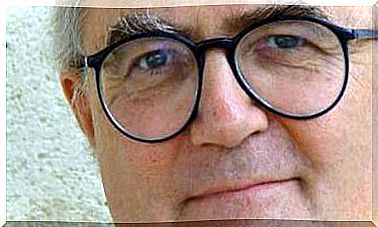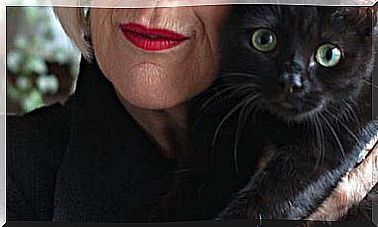Let’s Avoid Avoiding! How To Face Our Fears And Conflicts
A conflict, a person, a decision … Fear works as an indicator, instead of dissuading us, it guides us. Let’s see how we are able to get through it.

Avoiding those situations we fear can bring us short-term relief. But, in the long run, it is a mechanism that locks us in a repetitive and dead-end cycle. The problem will get bigger and will gradually limit our vital possibilities.
Our mind regulates itself
Fritz Perls, creator of Gestalt therapy, argued that in this therapeutic model there are only three truly important questions:
- The first is “what are you doing?” , which tries to lead the person to experience themselves in the here and now.
- With the second question, “How are you doing?” , it is intended that the one to whom it is addressed deepens in the awareness.
- The third and final question is “what are you avoiding?” .
With this, we can get an idea of the importance of the concept of avoidance in Gestalt therapy.
From its inception, the creators of this therapy emphasized the idea of homeostasis ; that is to say, the capacity of our organism – and our psyche – to regulate itself in the face of changes in the environment in order to maintain a state of internal balance.
If we let our bodies “flow”, then naturally we would find balance again.
We should allow our body to find the right way to react to a certain event – cry, get angry, laugh, get closer, move away … – without interrupting, repressing or questioning it.
Complications appear when our conscience intrudes and interrupts this process. We are constantly interrupting ourselves, Perls said. And why do we do it? we interrupt ourselves because, for various reasons, there is something we want to avoid in that natural flow of experience.
Our past experiences, our mandates, or the vanity of maintaining our self-image tell us that something unpleasant or dangerous will happen if we let the natural process take its course.
To avoid this dreaded consequence, we interrupt the homeostasis process and force ourselves to move in a certain direction or to remain immobile.
Unknowingly, by interrupting this process we have thrown ourselves off balance. We have become neurotic.
How to deal with a duel
Let’s see, for example, how to go through a grief or loss:
If we lose a loved one, we will feel hurt. We probably want to withdraw into ourselves, distance ourselves a little from the world around us, and be in touch with that genuine pain.
If we believe that this pain will destroy us – because, for example, it happened to our mother – or if we believe that we should be strong – because that is how our father taught us – then we will not allow ourselves to feel sadness. We will interrupt the healthy but painful process of grief.
If, on the contrary, we have been able to go through grief, we will discover that we can contact other things and other people and find satisfaction there.
But if in that we see a sign of lack of love towards the being that we have lost, it is possible that at that moment we interrupt that process of reopening to the world. We will stay locked up, making an altar of what we have lost; and of our life, a consecration.
Healthy pain or neurotic pain
It is not possible to establish general rules to know, in each situation, what our body needs as a whole. This is why our conscience is often confused. It is about being attentive to the authentic needs that arise at all times in order not to intrude.
To do this, in order not to divert or stop the natural process that leads us to the satisfaction of each need and, therefore, to a state of balance, it is necessary to pay attention to what we fear would happen if we surrender to our feelings.
What looms as fearsome on the horizon, and that we habitually avoid, is usually one of four things:
- A loss – as in the first example.
- A confrontation,
- A rejection
- The revelation of an unpleasant truth for us – for example, when the supposedly unpleasant truth is revealed that we can love others beyond the lost person.
When, as unpleasant, we avoid these experiences, what we do is exchange healthy pain for neurotic suffering.
The terrible difference between the two is that healthy pain is nourishing, it teaches us something ; passing through it, going through it, it evolves towards another sensation and, finally, it leaves us, having grown up with it.
Neurotic suffering, on the other hand, can be eternal: it is repetitive and, therefore, does not teach us anything, it leads us to behave in the same way over and over again; We do not go through it but we get stuck in it.
We could compare healthy pain with a gear inside a machinery that, when rotating, consumes energy to produce work; neurotic suffering, on the other hand, would be a loose gear that turns in the wrong, useless way.
For this reason, at times, the therapy process is painful, because it does not pursue happiness –or at least not in the beginning– but rather leads us to experience the painful experiences that we have been avoiding and that contain the learning that –for that very avoidance – we’ve skipped.
Sigmund Freud himself, at the beginning of psychotherapy, said how great the gain was if, as therapists, we managed to “change neurotic suffering for ordinary suffering.”
How to disable avoidance
Our neurosis – repetitive and sterile ways of relating to others and to the world – is not caused so much by the suffering generated by what happened as by the ways we find to defend ourselves against it. The “cure” is less about learning techniques to unlearn and deactivate our habitual avoidance mechanisms.
In addition to generating neurotic behavior, avoidance behavior produces an effect that makes it last over time, keeping fear intact.
By not facing the situation that causes us uncertainty, we never verify that we are capable of dealing with it. Consequently, their prospect becomes increasingly frightening.
Like those monsters in the comics that feed on the fear of their victims, so the feared situation grows and becomes more powerful each time we avoid it.
To prevent this mechanism from continuing to advance and affect more areas of our lives, it is essential to recognize it and begin to undo the path traveled. To do this, when we feel stagnant, we could return to that question from old Fritz: “What am I avoiding?”
Surely the answer will come to us easily, because the fears are always there throbbing.
Once we have identified what we avoid, it will be a matter of heading there. Fear should function as an indicator that, instead of dissuading us, guides us.
It is about daring to face what we fear: taking the risk of losing something, having a confrontation, enduring a rejection.
As the strategic therapist Giorgio Nardone used to say, “if you find yourself in the need to avoid something, avoid avoiding.” If we can do it, our profit will be double:
- We will abandon a neurotic behavior that causes us discomfort and stagnates us.
- We will learn what we need to cope with the different manifestations of the same conflict on all occasions when it occurs to us in the future.









